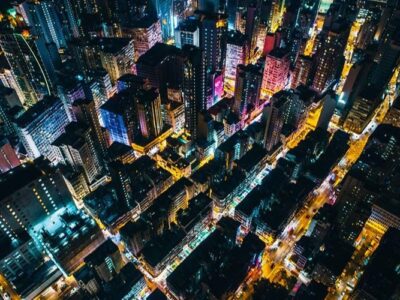Industrial lighting plays a crucial role in maintaining efficiency, safety, and productivity in various types of workplaces, including factories, warehouses, workshops, and other industrial settings. Choosing the right lighting is not just about improving visibility; it can also enhance worker safety and reduce energy costs. The selection process can be intricate due to the unique challenges posed by industrial environments. This blog post will guide you through key considerations and tips for choosing the best industrial lighting.
Understanding the Basics of Industrial Lighting
Before diving into specifics, it’s important to understand what makes popular big flood lights different. It needs to withstand harsher conditions than commercial or residential lighting. This can include exposure to extreme temperatures, moisture, dust, and vibrations – all while providing high-quality, reliable lighting.
Key Considerations:
1. Assess the Workplace Environment
- Temperature and Humidity: Ensure the lighting can perform under the specific thermal and moisture conditions of your space.
- Presence of Hazardous Materials: In environments with flammable gases or vaporous, explosion-proof fixtures are essential.
- Dust and Dirt: Look for fixtures rated for protection against particulates that could otherwise impair functionality.
2. Evaluate Lighting Types
- LEDs: These are highly energy-efficient, have a long lifespan, and are increasingly popular in industrial settings due to their durability and low maintenance.
- Fluorescent: Common in industrial applications due to their efficiency and high-quality light output; however, they can be sensitive to temperature fluctuations.
- High-Intensity Discharge (HID): Excellent for illuminating large spaces like warehouses but require a warm-up period and regular maintenance.
3. Consider the Lighting Design
- Task Lighting: Focus on areas where precision work is done, and ensure it is free from glare and shadows.
- Ambient Lighting: This is the overall light level in a space. It should be uniform and adequately bright to maintain a safe working environment.
- Emergency Lighting: Essential for safety during power failures, these should be integrated into your lighting design.
4. Check Energy Efficiency and Sustainability
- Investing in energy-efficient lighting (like LEDs) reduces operational costs significantly over time.
- Consider the environmental impact of your lighting solutions and opt for products with a lower carbon footprint.
5. Installation and Maintenance
- Ensure that the lighting can be easily installed and replaced if necessary.
- Factor in the ease of maintenance and the longevity of the lighting units.
6. Compliance and Standards
- Verify that the lighting meets all relevant industry standards and regulations.
- Look for certifications like UL, CE, or ETL which ensure that the products meet specific safety and performance criteria.
7. Smart Lighting Options
- Consider integrating smart lighting solutions that offer features like automated controls, motion sensors, and energy consumption data. These can further enhance efficiency and control.
Best Practices for Implementing Industrial Lighting:
- Perform a Lighting Audit: Before making any changes or upgrades, conduct a thorough analysis of current lighting conditions and energy usage to identify areas for improvement.
- Consult with Professionals: Given the complexities associated with industrial environments, consulting with lighting professionals or engineers can provide insights specific to your needs.
- Pilot Testing: Implement your new lighting solution in a small area to evaluate its effectiveness and worker satisfaction before rolling it out on a larger scale.
- Regular Monitoring: Once installed, continuously monitor the lighting system to ensure it maintains its effectiveness and adjust as necessary in response to feedback or changing workplace conditions.
Lighting Layout for Optimal Performance
Consider the concept of zoning when designing the layout for your industrial lighting. Different tasks require different levels of light, and dividing the workspace into zones based on the tasks performed can increase efficiency and worker comfort. For instance, areas dedicated to fine detail work need higher levels of light compared to storage areas. Also, the flexibility of the lighting system is crucial for accommodating changes in layout and usage of the space. Adjustable and modular lighting systems can adapt to the changing needs of an industrious workspace, making them future-proof investments.
Importance of Uniformity and Color Temperature
Uniform lighting distribution prevents the formation of shadows that can obscure vision and lead to errors or accidents. It’s also important to carefully select the color temperature of the industrial lighting. The color temperature can affect the mood and alertness of workers; cool white light typically helps maintain focus and is suitable for task-critical areas, while warmer tones may be better for break areas where relaxation is the goal. Consider the psychological impact of lighting and how it affects worker performance and well-being when choosing your lighting solutions.
Embracing Green Solutions and Return on Investment
The industry is increasingly embracing green solutions, and lighting is a significant part of this shift. Consider options that not only cut down electricity usage but also reduce the emission of greenhouse gases. Industrial LED lighting, which is remarkably energy-efficient and free from toxic materials like mercury, is a perfect example. Such eco-friendly choices contribute positively to your company’s CSR (Corporate Social Responsibility) profile and resonate well with environmentally conscious stakeholders and customers.
Analyzing the Return on Investment
When investing in an industrial lighting system, it is vital to consider the return on investment (ROI). While the initial cost might be higher for energy-efficient and durable lighting systems, the long-term savings on energy bills, reduced maintenance is cost, and less frequent need for replacements can lead to substantial financial benefits over time. A detailed cost-benefit analysis, taking into account these factors as well as potential increases in productivity due to better lighting conditions, will help you make an informed decision. Remember, the cheapest option upfront is not always the most cost-effective in the long run.
Conclusion
Choosing the right industrial lighting is pivotal for the safety, productivity, and efficiency of any industrial operation. By considering the factors mentioned above and following best practices, you can ensure that you select the best possible lighting solutions for your specific needs. Not only will this contribute to a better working environment, but it will also optimize operational costs and support sustainability. Whether upgrading existing lighting or planning new installations, thorough planning and consideration will pave the way for success.








Comments